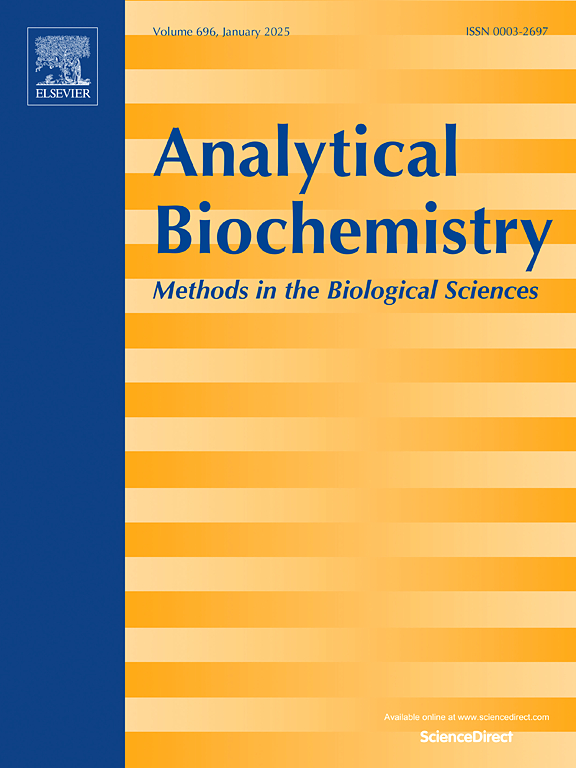Proposal and application of nitrogen rules in interpreting gas chromatography negative-ion chemical ionization mass spectrometry spectra
IF 2.5
4区 生物学
Q2 BIOCHEMICAL RESEARCH METHODS
引用次数: 0
Abstract
Analytical methods based on GC-MS and GC-MS/MS are widely used for the qualitative and quantitative analysis of physiological and non-physiological organic compounds in biological samples. They include chemical derivatization, GC separation of gasous analytes, their inline ionization in the ion-source, separation of ions by MS or MS/MS, their conversion to electrons, and their final multiplication and registration. Negative-ion chemical ionization (NICI) is usually performed by using methane as the reagent gas. For MS/MS analysis, argon is a common collision gas. In many GC–NICI–MS and GC–NICI–MS/MS mass spectra, the negative charge cannot always be assigned to particular atoms. In this article, rules are proposed for the interpretation of GC–NICI–MS and GC–NICI–MS/MS mass spectra. The NICI nitrogen rules (NICI-NR) were derived from GC–NICI–MS and GC–NICI–MS/MS mass spectra reported in the literature, and their utility is demonstrated exemplarily for N-containing analytes. The NICI-NR say that ions with even m/z values and odd number of N atoms, and ions with odd m/z values and even number of N atoms have a definitely assignable negative charge. In all other cases, including analyte derivatives that contain stable isotopes including 15N and are radicals, the negative charge is hidden. In those cases, the negative charge is associated with a reduction of a particular C atom, such as that in carbonyl groups, by the uptake of one methane-derived secondary electron. In NICI, carbonyl functionalities are introduced into the analytes by means of perfluorinated derivatization reagents such as pentafluoropropionic anhydride and pentafluorobenzoyl chloride that target N atoms of analytes such as amino acids, bioamines and drugs. The relative importance of carbonylic and F atoms in NICI is discussed.

气相色谱-负离子化学电离质谱分析中氮规则的提出及应用。
基于GC-MS和GC-MS/MS的分析方法广泛应用于生物样品中生理性和非生理性有机化合物的定性和定量分析。它们包括化学衍生化,气态分析物的GC分离,它们在离子源中的在线电离,用MS或MS/MS分离离子,它们转化为电子,以及它们最终的倍增和登记。负离子化学电离(NICI)通常使用甲烷作为试剂气体进行。对于质谱/质谱分析,氩气是常见的碰撞气体。在许多GC-NICI-MS和GC-NICI-MS/MS质谱中,负电荷并不总是分配给特定的原子。本文提出了GC-NICI-MS和GC-NICI-MS/MS质谱的解释规则。NICI氮规则(NICI- nr)来源于文献中报道的GC-NICI-MS和GC-NICI-MS/MS质谱,并以含氮分析物为例证明了其实用性。NICI-NR认为具有偶数m/z值和奇数N原子的离子,以及具有奇数m/z值和偶数N原子的离子具有确定可分配的负电荷。在所有其他情况下,包括含有稳定同位素(包括15N)和自由基的分析物衍生物,负电荷是隐藏的。在这些情况下,负电荷与特定的C原子的还原有关,例如羰基,通过吸收一个甲烷衍生的二次电子。在NICI中,羰基官能层是通过全氟衍生化试剂(如五氟丙酸酐和五氟苯甲酰氯)引入分析物的,其目标是分析物(如氨基酸、生物胺和药物)的N原子。讨论了羰基原子和F原子在NICI中的相对重要性。
本文章由计算机程序翻译,如有差异,请以英文原文为准。
求助全文
约1分钟内获得全文
求助全文
来源期刊

Analytical biochemistry
生物-分析化学
CiteScore
5.70
自引率
0.00%
发文量
283
审稿时长
44 days
期刊介绍:
The journal''s title Analytical Biochemistry: Methods in the Biological Sciences declares its broad scope: methods for the basic biological sciences that include biochemistry, molecular genetics, cell biology, proteomics, immunology, bioinformatics and wherever the frontiers of research take the field.
The emphasis is on methods from the strictly analytical to the more preparative that would include novel approaches to protein purification as well as improvements in cell and organ culture. The actual techniques are equally inclusive ranging from aptamers to zymology.
The journal has been particularly active in:
-Analytical techniques for biological molecules-
Aptamer selection and utilization-
Biosensors-
Chromatography-
Cloning, sequencing and mutagenesis-
Electrochemical methods-
Electrophoresis-
Enzyme characterization methods-
Immunological approaches-
Mass spectrometry of proteins and nucleic acids-
Metabolomics-
Nano level techniques-
Optical spectroscopy in all its forms.
The journal is reluctant to include most drug and strictly clinical studies as there are more suitable publication platforms for these types of papers.
 求助内容:
求助内容: 应助结果提醒方式:
应助结果提醒方式:


